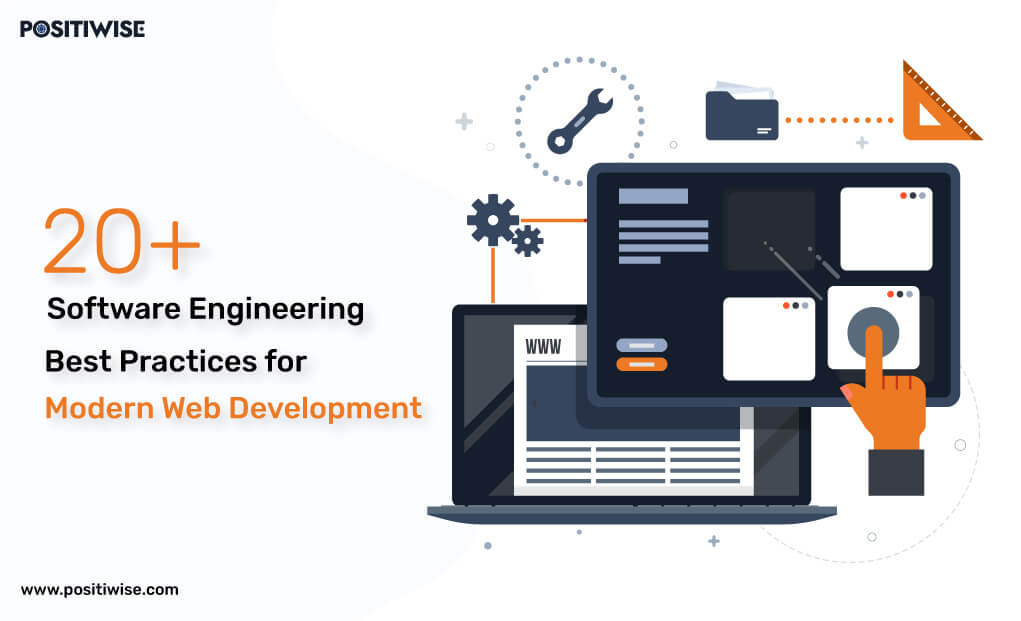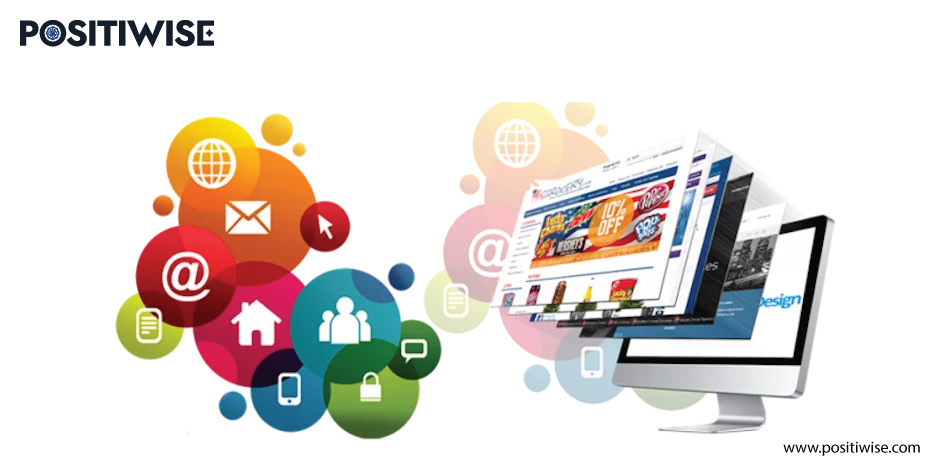Quick Overview:
Everyone wants their application to be high in performance, compatible with platforms, secure, scalable, and robust. Fulfilling such requirements depends on the programming language, development framework, and best practices. Such practices help you align software with new-age requirements and boost productivity. If you are a developer, then you should understand software engineering best practices. And now, you don’t have to look any further, as all significant modern software engineering practices are listed in this blog.
Best Practices for Software Engineering
Understanding software engineering best practices is a must for a developer. It supports them in growing as a professional and contribute more efficiently to a project. Even development companies and large tech giants prefer people with the best software engineering practices knowledge for senior roles.
If you also want to grow your professional journey, here we represent 20+ software engineering best practices for 2023 and upcoming years. So, let’s get started.
The Need for Best Practices in Modern Software Engineering
Best practices build a stronger foundation of software and leverage with the below benefits:
- Helps to align with regulatory and administrative standards.
- Ensures that the software is working per expected and required behavior.
- Provides flexibility in integrating new features.
- Aids to improve version control, monitoring, and troubleshooting.
- Helps in saving cost, time, and effort.
- Improves communication and collaboration between team members.
- Reduces errors and minimizes data breach possibilities.
- This leads to unleashing the maximum potential of an application, contributing to overall productivity.
- Makes deployment faster and supports automating infrastructure management.
The Best Software Engineering Best Practices: A Complete List
Below are the most recommended, standardized, and trending modern software engineering best practices that you must follow.
- Choose the right SDLC Model
- Undergo coding best practices
- Always unit-test the code
- Prefer BDD (Behavior Driven Development)
- Execute Manual Testing
- Perform Automated Testing
- Use CI/CD
- Put relevant code comments
- Document Everything
- Design Architecture for maximum scalability
- Perform frequent code reviews
- Focus on technical debt
- Decouple with microservices
- Monitor and Log
- Choose DevSecOps
- Configure cloud infrastructure
- Code sign the software
- Focus on CIA and AAA
- Use reliable communication mechanisms
- Consider Infrastructure as Code
- Utilize Version Control
1. Choose the right SDLC Model
The software development lifecycle defines the process followed by the development team to build the application. It’s available in different formats/types, such as Agile, Waterfall, Scrum, Kanban, and more. Before developing any software, undergo its requirements and choose the most appropriate SDLC model.
For instance, the Waterfall SDLC model would be relevant if the project requirements are straightforward and for small-scale usage. Furthermore, if the needs of the project are dynamic, the budget is flexible, and it will cover a large-scale audience with dynamic requirements, then Agile methodology is best.
Similarly, you should undergo every project needs and details about SDLC methodologies for building a strong foundation.
2. Undergo Coding Best Practices
Whether someone’s a newbie or a veteran software engineer, they must follow the coding standards. It will help them to develop a clean and structured codebase, leveraging easy-to-read code advantage. Also, it will enable the compiler or interpreter to process every variable, method, and class in minimal time.
Furthermore, a clean code aligning with software engineering best practices enables quick troubleshooting and upgradation. The security teams also benefit from it while patching vulnerabilities and removing bugs in the production environment. You have to follow the three primary practices:
- DRY (Don’t Repeat Yourself): It means removing the duplicate code to reduce attack surface and resource utilization.
- YAGNI (You Aren’t Gonna Need It): It means don’t add a code until it’s required for the current application.
- KISS (Keep It Simple, Stupid): It means trying to make things as simple as you can. Don’t overcomplicate things by increasing code lines.
Accelerate Your Business with Custom Software Solutions
Struggling with outdated or ineffective software? Our expert team provides custom systems designed specifically for your business needs. We analyzed your operations, built solutions to fit your workflow, and integrated them with existing infrastructure.
3. Always Unit Test the Code
Unit tests must be the duty of every developer, regardless of the technology, programming language, and framework they work upon. By performing the unit tests, bugs, errors, and exceptions can be resolved/handled in the early stage. Due to this, the testing phase gets completed within minimal time, and sprints get decreased in agile methodology.
Moreover, the unit test helps in:
- Improving the software quality and optimizing performance.
- Supporting developers to find bugs and resolve them before production easily.
- Minimizing the complexity and reducing the attack surface.
- Aligning with KISS, YAGNI, and DRY coding practices for accurate results.
4. Prefer BDD (Behavior Driven Development)
The main purpose of using behavior-driven development is to balance the technical and business objectives. It’s quite understandable that sometimes technical persons can lack an understanding of the business perspective. Due to this, the software doesn’t behave in the manner in which the business wants it.
To reduce this gap between business managers and technical persons, BDD is necessary. In this approach, software behavior examples are created to provide clarity to developers. As a result, the development team learns what is required and then works to deliver the same features and functionality. Thus, BDD is a must in software engineering.
5. Execute Manual Testing
The manual testing approach must be in your modern software engineering best practices. With the help of human intelligence, any kind and size of software can be tested thoroughly. The test cases created during manual testing help identify and resolve faulty code blocks.
In addition, it provides insight into how an attacker can breach the system. As a result, you can discover all potential mechanisms that can be used by unauthorized personnel. And then, you can configure appropriate security controls to mitigate cyber risks and prevent threat actors.
6. Perform Automated Testing
With manual testing, you should also perform automation testing for a second opinion. It will provide you with the following benefits:
- Automated testing tools will save time using built-in test case logic.
- It helps in faster deployment of applications and also improves productivity.
- It aids in running testing on every platform, browser, and operating system. Thus, you get a wide of the compatibility and functioning factor.
- You can run tests anytime and even set the test cases to run without human interference.
- The results of automation tools are accurate, and some even provide suggestions to improve them.
7. Use CI/CD
Continued integration and continuous development are the two primary pillars of the DevOps software development methodology. It’s highly in demand nowadays, as it helps in faster application deployments, even for large-scale projects with dynamic requirements. It also improves the collaboration between the development and operations teams, resulting in top-notch results.
For the new-age projects, you should implement a CI/CD pipeline. It will provide you with numerous benefits, like reduction in cost, constant feedback to all teams, prevention of outages, improved visibility across development, and utmost code quality. Moreover, if you want to roll back a feature, it will streamline the process and help you complete it within minimal time.
8. Put Relevant Code Comments
Comments are for defining the working of a code block and how it’s associating with other services in an application. The main purpose of using comments is to make maintenance and modifications easy and quick. Also, if a developer leaves in-between, comments help others to understand what their code executes.
However, whenever you write comments, you must define some rules below that everyone on the team must follow.
- There should be no jargon or slang.
- Simple language must be used.
- No personal notes and jokes.
- Try to explain everything in fewer words.
- Write a comment precisely in front of the code block.
9. Document Everything
Software documentation is a crucial task you must perform for every application, regardless of size. Whether you develop a single-page app, desktop software, website, or a large eCommerce store, always document it. A custom software development company that provides documentation in high demand, and everyone prefers them.
When you document software, include information about its features, architecture, deployment model, technical objectives, business objectives, programming language used, conciseness, scope, design principles, system pattern, and more. As a result, all the required information will become handy, helping you provide training, upgrade applications, and generate user manuals.
10. Design Architecture for Maximum Scalability
While developing any of the business, always keep scalability in mind. It will support the organization to handle growing user needs in an economical manner. The architecture design, backend logic, and database must be proficient in handling all user requests promptly.
You can seamlessly increase the scalability of software by using cloud-based infrastructure, microservices architecture, and distributed databases. Once you configure any of such mechanisms, your application will effortlessly onboard a growing customer base, and overhauls will also be prevented.
11. Perform Frequent Code Reviews
Peer review is another name for code reviews, and it’s used for ensuring the code quality and structure. It helps identify bugs and understand the codebase, removing unnecessary blocks for optimizing performance. By adding code reviews to your best software engineering practices, you can benefit from the following:
- Better collaboration between members of the development team.
- Reduction in bugs and errors in the codebase.
- Removal of vulnerable loopholes, reducing the probability of zero-day exploitation.
- Enhancement of software maintenance and support.
- Efficient project monitoring per requirements.
- Consistency between the design, behavior, and business logic.
12. Focus on Technical Debt
You should focus on no or very minimal technical debt, as it can lower your revenue and increase your efforts afterward when your primary aim is to deliver the application rather than making it bug-free and aligned with quality standards. Then, the probability of high technical debt increases.
You have to make a balance between software product development and debt by ensuring error-free and maintainable software. So, whenever you build an application, thoroughly test it and ensure its quality. The compatibility, functioning, integrations, and security controls should be working properly throughout the lifecycle.
13. Decouple With Microservices
Microservices is a software architecture type that offers fault isolation, exponential scalability benefits, and complete resilience. For medium and large-scale applications, you should consider microservices as their foundation. It will help you effortlessly implement the CI/CD pipeline, leading to development and deployment faster than other traditional methods.
Furthermore, it will also provide the following pros:
- It helps to handle larger user traffic while retaining quality and performance.
- It supports easy upgrade of applications without any availability issues.
- It allows the individualize each service and modify them independently.
- It makes it easy to perform versioning and refactoring.
14. Monitor and Log
Monitoring and logging are both essential during and after the software development. When you hire experienced software developers, they always recommend logging every detail and monitoring software using AWS CloudWatch or Elastic Stack.
With the help of logging, you can identify the root cause of an issue and from it’s being generated. By using such information, you can take appropriate action and prevent it from happening in the future. In addition, it will aid in ensuring the application quality in a controlled environment and delivering expected results to users. But, you should remember that a centralized system must be in place for better observability.
15. Choose DevSecOps
DevSecOps is a new-age approach, and numerous organizations and development teams are considering it for their projects. It works similarly to DevOps but with an added advantage of security. Under it, development, security, and operations work simultaneously. You should also prefer it for your software development projects.
DevSecOps approach ensures that the code directly getting deployed to production is secure and free from bugs, errors, and vulnerabilities. The security team works in the middle of integration and deployment to verify the functioning, behavior, and compatibility. Thus, you should prefer DevSecOps over other methodologies for faster deployments in a secure environment.
16. Configure Cloud Infrastructure
When possible, deploy software on a cloud infrastructure. It will help you maximize the availability and improve accessibility across devices and platforms. In addition, its centralized security will be sufficient to maintain data integrity and confidentiality. Moreover, it will offer you instant resource scalability and load balancing to retain performance in every scenario.
Furthermore, by choosing cloud infrastructure, you can also benefit from the following:
- Readily available insights for scalability reference.
- Top-notch reliability and sustainability.
- Single-click configuration for monitoring and logging purposes.
- 24/7 accessible SDKs for developing, debugging, and maintaining applications.
- Make software and websites redundant and fault-tolerant.
17. Code Sign the Software
Before you deploy any software in the production environment, always code-sign it using an authentic code-signing certificate. It will encrypt the overall code to prevent unauthorized persons from accessing and modifying it. In addition, it’s compulsory for companies to code-sign the application before uploading it to online app stores.
Furthermore, signed software is considered trustworthy by operating systems. It means whenever your users will install the software, they will not see any alert or untrusted software notification. Therefore, a smooth installation experience will be provided, and you will see a boost in customer satisfaction, reputation, and retention.
18. Focus on CIA and AAA
CIA (Confidentiality, Integrity, and Availability) and AAA (Authentication, Authorization, and Accounting) are cyber-security fundamentals you must consider while developing the software. Configuring mechanisms, according to these measures, help in aligning with regulatory security standards and minimizing the risk of cyber-attacks.
For every software, try to configure the following controls:
- Authentication for identifying and verifying the user.
- Authorization for providing the right amount of access to regular and confidential resources.
- Accounting to prevent disagreement over responsibility for a particular task.
- Data validation to prevent injection attacks.
- SSL configuration for secure data transfer within a client-server architecture.
- Hashing to maintain data integrity and confidentiality.
- Code signing for not revealing code to external or unauthorized parties.
19. Use Reliable Communication Mechanisms
Communication and collaboration are the key factors that support the building of top-notch software. You should utilize a reliable, advanced, and centralized tool for sharing information and communicating with team members, clients, and other required stakeholders. Also, arrange two to three communication methods to have a backup path.
For communication, you can use Skype, Microsoft Team, Outlook, and Slack per your requirements. For managing projects, you can consider Trello, JIRA, Basecamp, Notion, Asana, and more. But, ensure that you create an internally used mail address for all communication to prevent data breaches and fulfill the NDA agreement conditions.
20. Consider Infrastructure as Code
Cloud management will become accessible by incorporating infrastructure as a code approach in your best software engineering practices. It will provide the leverage of automation and orchestration in handling the infrastructure. Also, it will reduce human efforts and errors, making the system more compliant.
Additionally, it can ensure consistent configurations, faster deployment, optimized accountability, improved operational efficiency, and minimal risk. From a cost-saving perspective, it also helps to reduce the technical debt amount within minimal time. And if you have version control and change management needs, it can automate that for you. Therefore, Infrastructure as code is the future, and you should start using it.
21. Utilize Version Control
Use version control for tracking and managing the changes made to the code. The primary purpose of version control is to roll back the upgrade effortlessly if it triggers vulnerabilities or negatively impacts the business metrics. To efficiently benefit from version control, prefer using the DevOps or DevSecOps development methodology.
In addition, utilize a centralized tool, such as Git, for version control. It will automatically create branches and log every modification. Also, it can be accessed from anywhere, which can benefit people working remotely. In addition, the conflicts will also be resolved, as it prevents duplicate code from getting added to the primary folder.
What to look for in a Company offering Modern Web Development Services?
While you look for a company offering modern web development services, confirm that they follow the best software engineering practices. It will benefit you in availing of a top-notch application, complying with industry standards, retaining data integrity, and unleashing the utmost app potential. Also, there would be minimal errors, prevention of exploits, and affordable maintenance opportunities.
However, verify the development company’s tools and examine their portfolio better to understand their proficiency, expertise, and experience. Lastly, discuss cost, time, and pricing models, and if you are satisfied with the services and benefits, onboard them and start developing your solution.
Concluding Up
Following the best software engineering practices is recommended in the modern web development landscape. It provides numerous benefits, like reducing errors, saving costs, minimizing technical debt, solidifying security, faster deployments, and more. Whether someone is a newbie or a professional developer, they all should understand and follow the above-mentioned best practices.
In 2023 and upcoming years, following best practices will help you stand out from others. The software developed by you by keeping these practices in focus will support you in achieving significant business targets.
Expert in Marketing Strategy and Brand Recognition
Jemin Desai is Chief Marketing Officer at Positiwise Software Pvt Ltd, he is responsible for creating and accelerating the company’s marketing strategy and brand recognition across the globe. He has more than 20 years of experience in senior marketing roles at the Inc. 5000 Fastest-Growing Private Companies.






